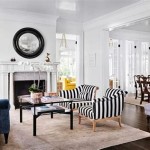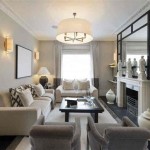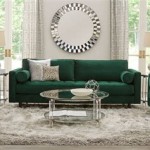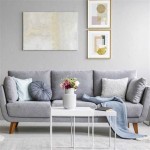Accent Wall Paint Colors For Living Room
The living room serves as a central hub for many homes, a space for relaxation, entertainment, and connection. The aesthetic choices made in this room significantly impact the overall ambiance and perceived comfort. Among these choices, the color palette plays a crucial role. While a cohesive color scheme throughout the room is essential, incorporating an accent wall can inject personality, depth, and visual interest into the space. An accent wall, typically painted in a contrasting color to the other walls, draws the eye and helps define a focal point. Choosing the right paint color for this wall requires careful consideration of several factors, including the existing décor, the desired mood, and the architectural features of the room.
Selecting the appropriate color for an accent wall is not merely about choosing a favorite hue; it involves understanding color theory, considering the room's lighting conditions, and assessing the existing furniture and accessories. A poorly chosen color can disrupt the harmony of the room, making it feel unbalanced or even claustrophobic. Conversely, a well-chosen accent wall color can elevate the entire space, adding a touch of sophistication and reflecting the homeowner's personal style. This involves a deliberate process of evaluating various color options and understanding their psychological and visual effects.
The placement of the accent wall is almost as important as the color itself. Typically, an accent wall is used to highlight a particular architectural feature, such as a fireplace, a large window, or a built-in bookcase. It can also be used to create a visual backdrop for furniture, such as a sofa or a media console. The wall chosen should be the one that naturally draws the eye upon entering the room. Identifying this focal point is the first step in creating a successful accent wall.
Understanding Color Psychology and Its Impact
Color psychology explores the impact of different colors on human emotions and behaviors. Understanding these associations can significantly aid in selecting an accent wall color that achieves the desired atmosphere in the living room. Different colors evoke different feelings and can influence the overall mood of the space. For example, warm colors like reds, oranges, and yellows tend to be energetic and stimulating, while cool colors like blues, greens, and purples are often associated with calmness and relaxation. Neutral colors, such as grays, beiges, and whites, provide a backdrop for other colors and can create a sense of serenity and sophistication.
Red, a powerful and vibrant color, can add drama and excitement to a living room. However, it should be used sparingly as it can be overwhelming in large doses. A red accent wall can be particularly effective in a living room with a neutral color scheme, adding a bold pop of color. Orange, a cheerful and optimistic color, can create a warm and inviting atmosphere. It works well in living rooms that receive little natural light. Yellow, a bright and sunny color, can add a sense of energy and optimism to a space. However, it should be used carefully as some shades of yellow can be too intense for a living room.
Blue, a calming and serene color, can create a relaxing and peaceful atmosphere. It is a popular choice for living rooms, especially those used for relaxation and entertainment. Green, a refreshing and natural color, can bring a sense of harmony and balance to a space. It works well in living rooms with plants and natural elements. Purple, a sophisticated and luxurious color, can add a touch of elegance and drama to a living room. It is often used in combination with other colors to create a visually interesting space.
Neutral colors offer a versatile and timeless option for accent walls. Gray, a sophisticated and versatile color, can create a sense of calm and serenity. It works well in modern and contemporary living rooms. Beige, a warm and inviting color, can create a cozy and comfortable atmosphere. It is a popular choice for traditional and transitional living rooms. White, a clean and crisp color, can make a living room feel larger and brighter. However, it should be used carefully as it can also feel sterile and impersonal. Experimenting with different shades of these neutral colors can create surprisingly dynamic effects.
Considering Room Size, Lighting, and Existing Decor
The size of the living room plays a significant role in determining the best accent wall color. In a small living room, dark colors can make the space feel even smaller and more enclosed. Lighter colors, on the other hand, can create the illusion of more space. Therefore, in a small living room, it is often best to choose a light or medium-toned color for the accent wall. In a large living room, dark colors can be used to create a sense of intimacy and coziness. A dark accent wall can also help to define a specific area within the room, such as a reading nook or a conversation area.
The amount of natural and artificial light in the living room is another crucial factor to consider. Natural light can significantly affect the way paint colors appear. Colors that look vibrant and saturated in bright sunlight may appear dull and muted in a room with little natural light. Similarly, artificial light can also alter the appearance of paint colors. Warm-toned light bulbs can make colors appear warmer, while cool-toned light bulbs can make colors appear cooler. Before committing to an accent wall color, it is essential to test it in the room under different lighting conditions.
The existing decor in the living room, including furniture, rugs, and accessories, should also be taken into consideration when choosing an accent wall color. The accent wall color should complement the existing decor and create a cohesive and harmonious look. It is helpful to consider the color palette of the furniture and accessories and choose an accent wall color that either complements or contrasts with these colors. For example, if the living room has a neutral color scheme, a bold accent wall color can add a pop of visual interest. Conversely, if the living room has a vibrant color scheme, a more subdued accent wall color can help to balance the space.
Testing paint colors is an essential step in the process. Paint a large swatch of the potential accent wall color on the wall and observe it under different lighting conditions throughout the day. This will help to determine how the color looks in the room and whether it complements the existing decor. It is also helpful to compare different shades of the same color to see which one works best in the space. Consider painting several swatches of different colors side by side to see how they look together. This will help to create a cohesive and harmonious color scheme for the living room.
Popular Accent Wall Color Options and Their Applications
Several paint colors are consistently popular choices for accent walls in living rooms. These colors offer versatility and can be adapted to suit various styles and preferences. Deep blues, such as navy or indigo, are classic choices that evoke a sense of sophistication and tranquility. These colors work well in living rooms with a coastal or traditional style. They pair well with white or cream-colored furniture and natural wood accents.
Emerald green is another popular choice for accent walls, offering a refreshing and vibrant touch to the living room. This color is particularly effective in living rooms with plants and natural elements. It can create a sense of harmony and balance. Emerald green pairs well with neutral colors like white, gray, and beige, as well as with gold or brass accents.
Charcoal gray is a sophisticated and versatile option for accent walls, creating a sense of calm and serenity. This color works well in modern and contemporary living rooms. It provides a neutral backdrop for furniture and accessories, allowing them to stand out. Charcoal gray pairs well with bright pops of color, such as yellow, orange, or pink.
Mustard yellow is a bold and cheerful choice for accent walls, adding a sense of energy and optimism to the living room. This color is particularly effective in living rooms that receive little natural light. However, it should be used carefully as some shades of yellow can be too intense for a living room. Mustard yellow pairs well with neutral colors like gray, white, and black, as well as with wood tones.
Terracotta is a warm and earthy color that can create a cozy and inviting atmosphere in the living room. This color is particularly well-suited for living rooms with a rustic or bohemian style. It pairs well with natural materials like wood, leather, and rattan, as well as with plants and textured fabrics. It's important to choose the right shade of terracotta, depending on the existing color scheme, as some can appear too orange or brown.
Ultimately, choosing the right accent wall color for the living room is a personal decision. It should reflect the homeowner's individual style and preferences, while also taking into consideration the factors discussed above. By carefully considering the existing decor, room size, lighting conditions, and color psychology, it is possible to create an accent wall that enhances the beauty and functionality of the living room.
The key to a successful accent wall is to be intentional and deliberate in the color selection process. Rushing the process or choosing a color without careful consideration can lead to disappointing results. Taking the time to explore different color options, test them in the room, and consider their impact on the overall aesthetic is essential for creating an accent wall that elevates the living room and reflects the homeowner's unique style.

How To Choose The Perfect Accent Wall 360 Painting

The Best Dark Statement Accent Wall Paint Colors For Your Home

Living Room Paint Ideas With Accent Wall Wandfarben Ideen Wohimmer Design Schlafzimmer

15 Best Accent Wall Ideas How To Create An

18 Ideas For Designing An Accent Wall Extra Space Storage

6 Accent Wall Ideas To Add Character Every Room Beamin Moore

The Best Dark Statement Accent Wall Paint Colors For Your Home

Top Colours To Choose For Accent Wall Paint

How To Pick An Accent Wall Color Budget Dumpster

30 Living Room Paint Colors Inspiration For An Inviting Space Beamin Moore Wall Color Schemes








